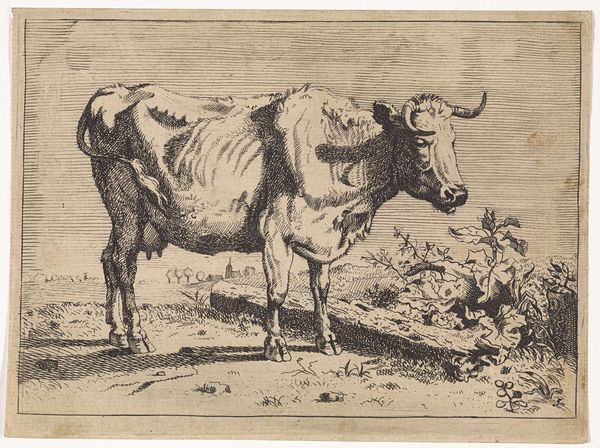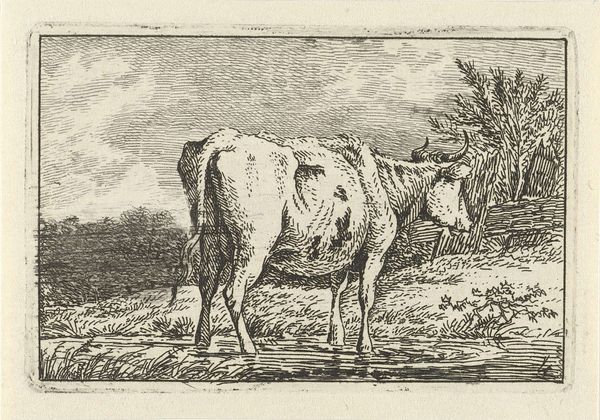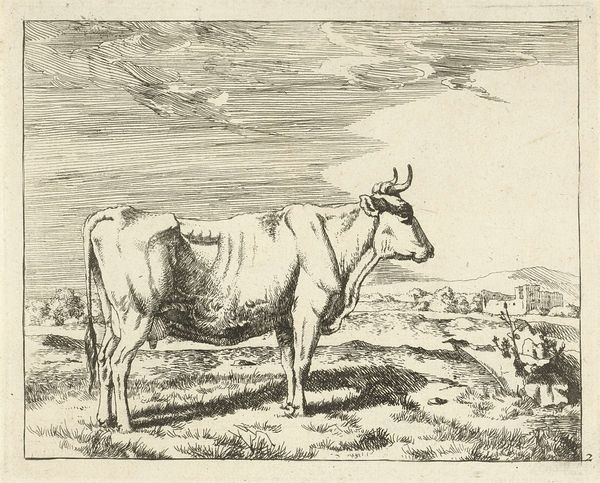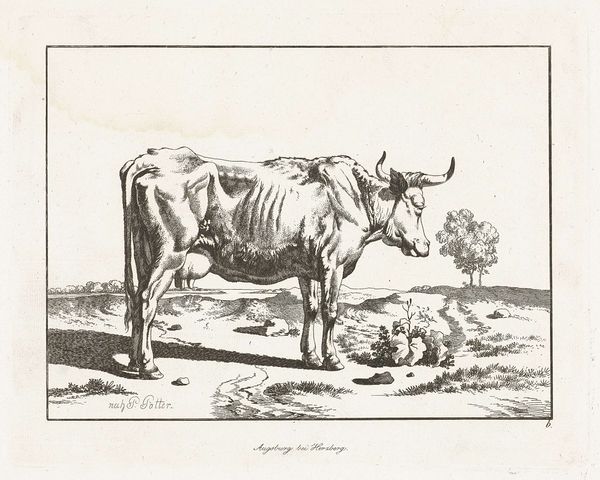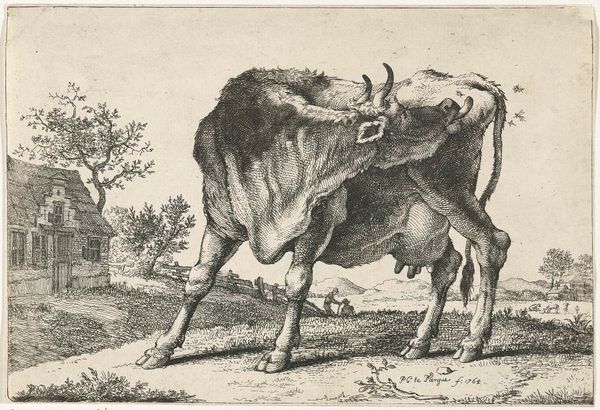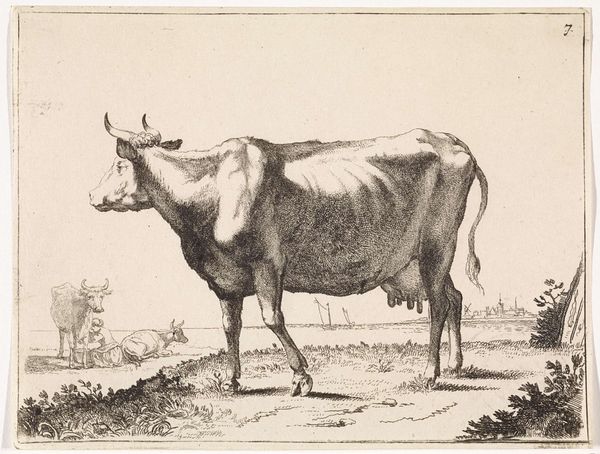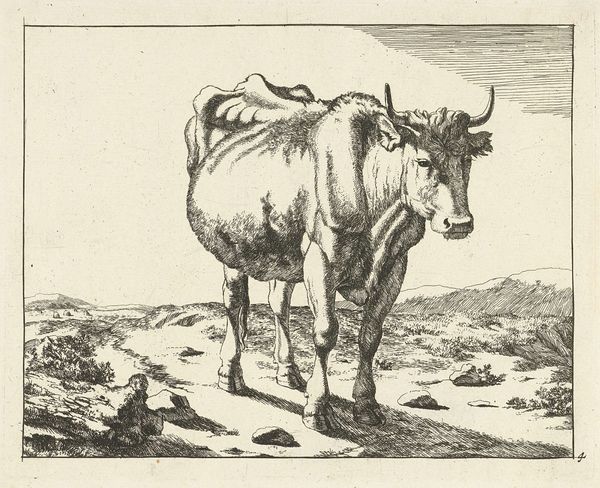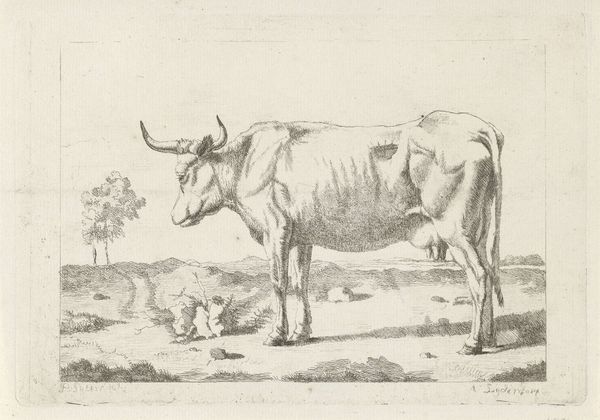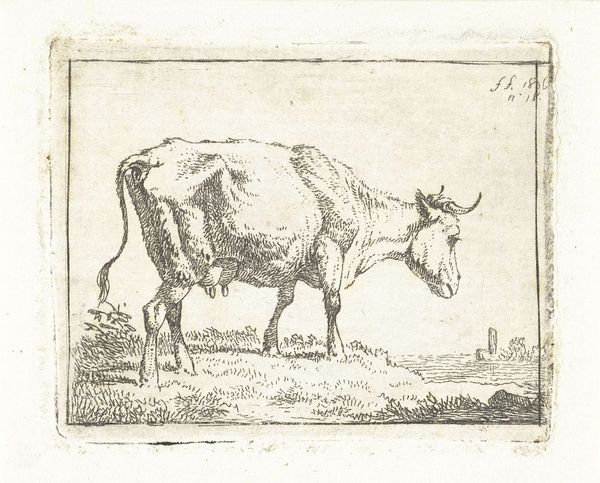
print, etching
# print
#
pen sketch
#
etching
#
old engraving style
#
landscape
#
genre-painting
#
realism
Dimensions: height 114 mm, width 149 mm
Copyright: Rijks Museum: Open Domain
Editor: Here we have Marcus de Bye’s “Standing Cow, with Tree,” an etching from around 1657 to 1761. It strikes me as surprisingly austere. What do you see in this piece from a formalist perspective? Curator: I see a deliberate study in contrasts. Note how the solid mass of the cow dominates the composition, yet the artist uses delicate, almost fragile, lines to define its form. The foreground and background, despite being part of the same landscape, are rendered with very different textures and tonal values, creating an intriguing tension. Editor: So, it’s less about what the cow *represents* and more about how the lines and textures interact? Curator: Precisely. The interplay between light and shadow is also crucial. Notice how the artist uses cross-hatching to suggest depth and volume, particularly in the cow’s body. It's a strategic approach to depict form through tonal modulation. Are you drawn to any particular aspect of the composition? Editor: The tree, perhaps? It's almost an afterthought, yet its delicate lines provide a stark contrast to the heavier form of the cow. Curator: Indeed. The tree serves almost as a foil, emphasizing the cow's substantial presence. The artist creates a visual tension by contrasting different approaches to representing texture and volume. Editor: I hadn’t thought of it that way. I guess paying attention to those details gives a totally new way of appreciating it, aside from what it depicts. Curator: Exactly! By examining how line, light, and form intersect, we move beyond mere representation into an understanding of the artwork’s intrinsic qualities. It’s the semiotic elements, these relationships, which grant deeper insights.
Comments
No comments
Be the first to comment and join the conversation on the ultimate creative platform.
